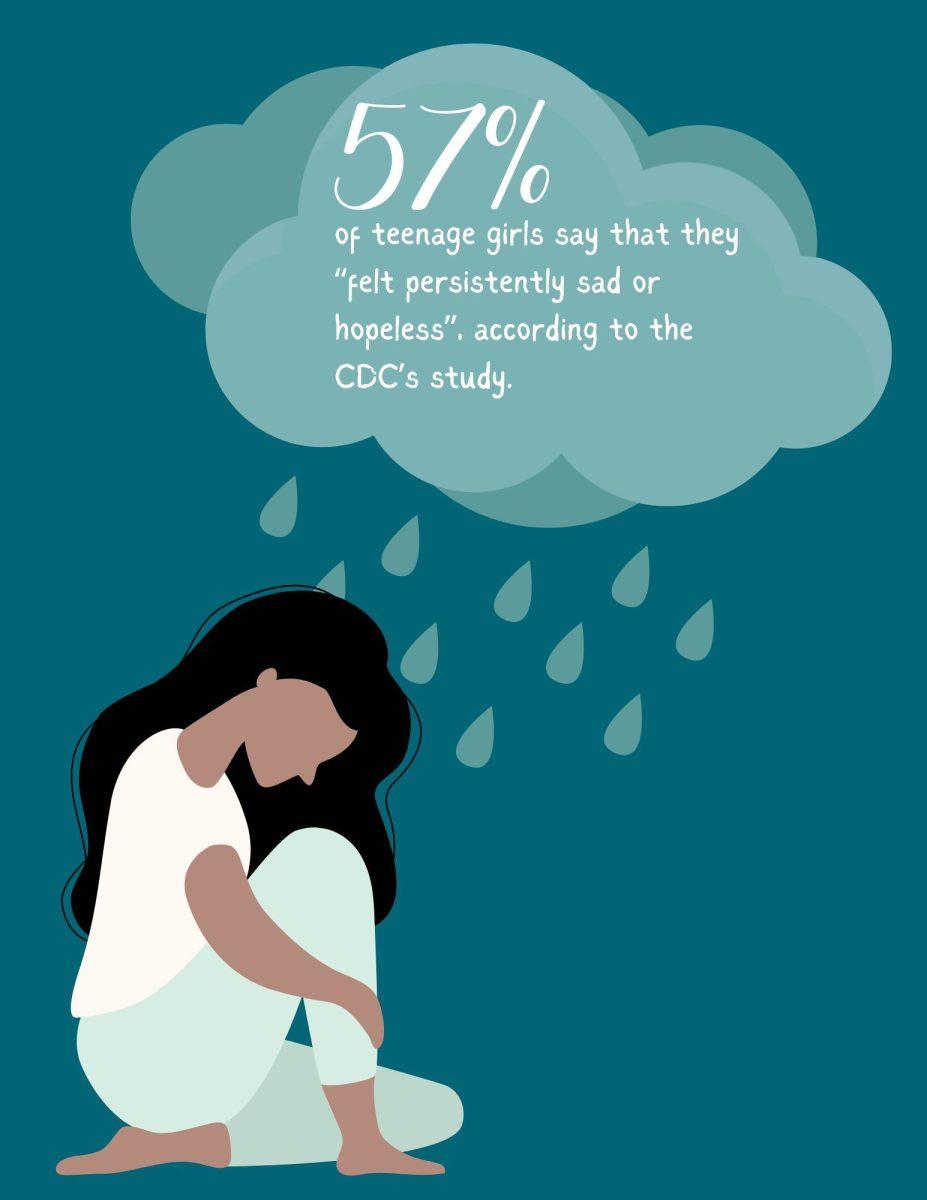The Centers for Disease Control (CDC) published a study in February that found teenage girls in the United States have been subject to an increase in sadness over the last 10 years, including college students.
Elizabeth Armstrong ’26 said she first experienced depression when she was in eighth grade. Armstrong recalls feeling isolated and unworthy to be around anyone.
A few weeks into Armstrong’s first semester at St. Joe’s in fall 2022, her depression worsened, and she became more withdrawn, more anxious and prone to losing her appetite. Amstrong said she also had a dysfunctional sleep schedule.
“I completely shut down when I get into depressive episodes, and I just don’t leave my bed,” Armstrong said. “I stay up all hours of the night and then crash during the day.”
Armstrong is part of the 57% of teenage girls who say that they “felt persistently sad or hopeless,” according to the CDC’s study. The study reported that 57% of teen girls aged 12-18 felt persistently sad or hopeless in 2021, which was an increase of 60% from their last study in 2011. For boys, the statistic is halved.
“We start to see gender differences in rates of depression in middle adolescence with rates being double in adolescent girls compared to adolescent boys,” Josephine Shih, Ph.D., professor of psychology, wrote in response to written questions from The Hawk. “This gender difference continues and remains constant into adulthood.”
Research has also shown that depression can increase in college students.
“The transition to college is a time of great potential (leave dysfunctional social circles and have a chance to start anew), but also the change could negatively impact individuals who are vulnerable to depression,” said Shih.
Armstrong said her depression and sadness have specifically affected her college experience.
“When I go into my low moods, I shut down, and my friends don’t hear from me, I miss classes, and I never complete the work that I have assigned,” Armstrong said.
To help combat her symptoms, Armstrong makes use of the resources around her.
“I just started going to CAPS recently, and I feel like they’ve been a really good help,” Armstrong said. “And just talking to my friends who also have experienced some of these things helps me accept it a little bit more.”
Anna Fisher ’26, who has also suffered from depression, said there are certain ways that sadness affects her.
“Whenever I get sad, I get this overwhelming feeling of hopelessness, and I have a really hard time believing that I’m gonna get out of that feeling,” Fisher said.
While increasing sadness and hopelessness is a growing issue among young women today, Shih said there is a positive side to the data.
“This finding has spurred on research on mental health programs and prevention programs in the school-setting,” Shih said. “Programs that help us learn ways to shorten the amount of time we react emotionally in a strong way are helpful in mitigating sadness and depressive reactions.”
Members of the St. Joe’s community seeking support are encouraged to contact the following resources:
Counseling and Psychological Services (CAPS), 610-660-1090
Campus Ministry, 610-660-1030
The Office of Student Outreach & Support, 610-660-1149
The Jesuit community, 610-660-1400
Employee Assistance Program, 866-799-2728















































